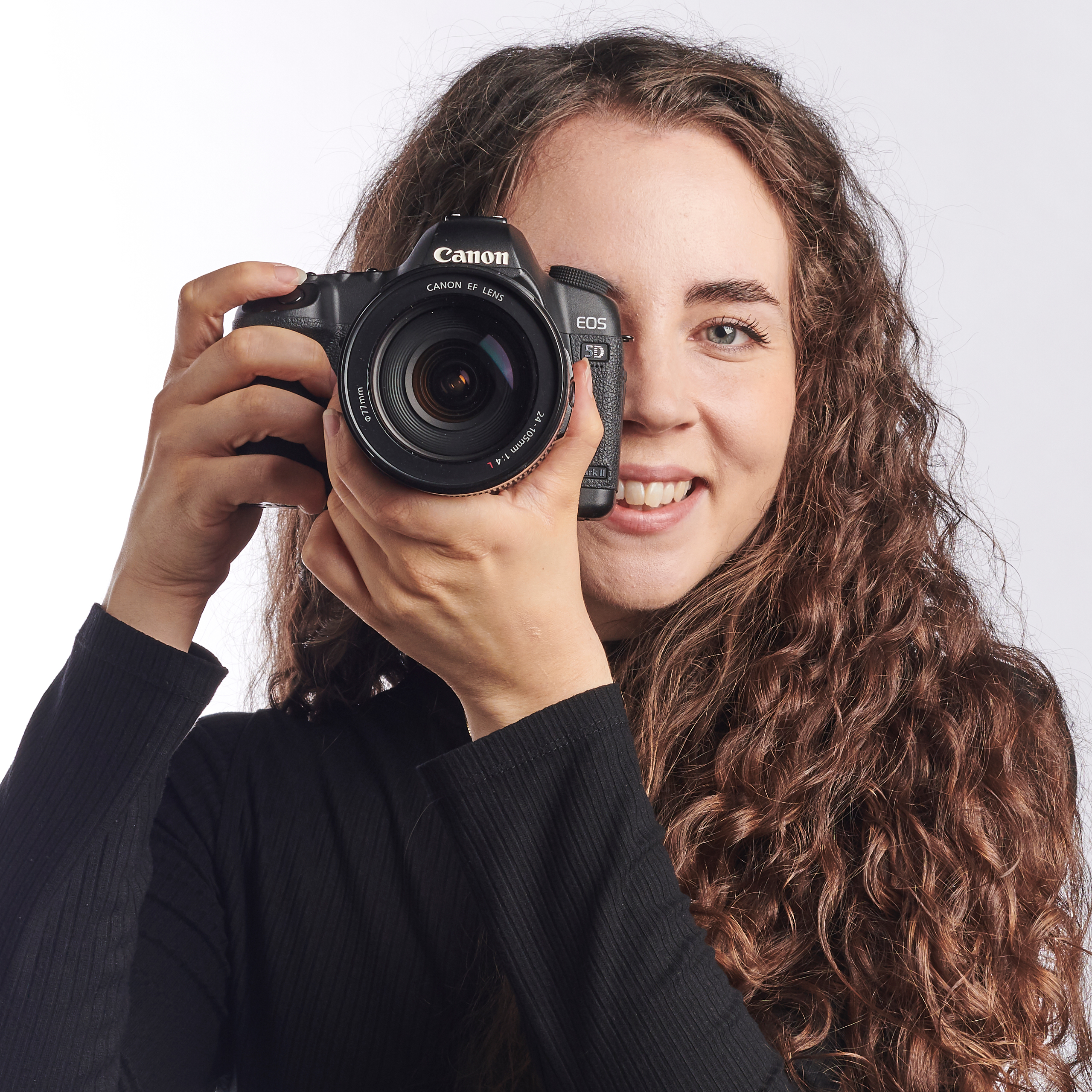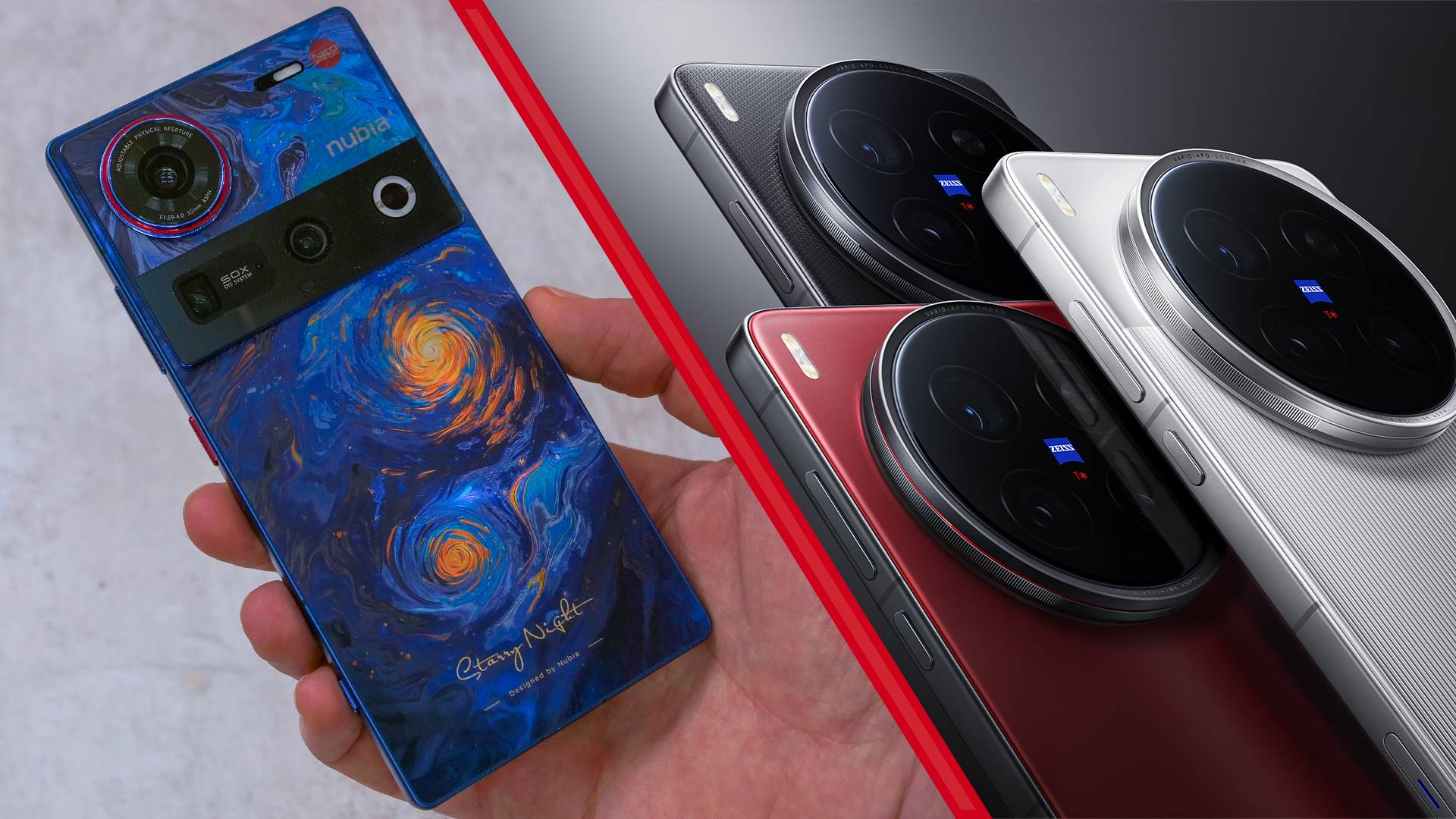Every camera on the Mars Perseverance rover from NASA explained
The Mars Perseverance rover from NASA has a total of 23 cameras – and here's what they all do
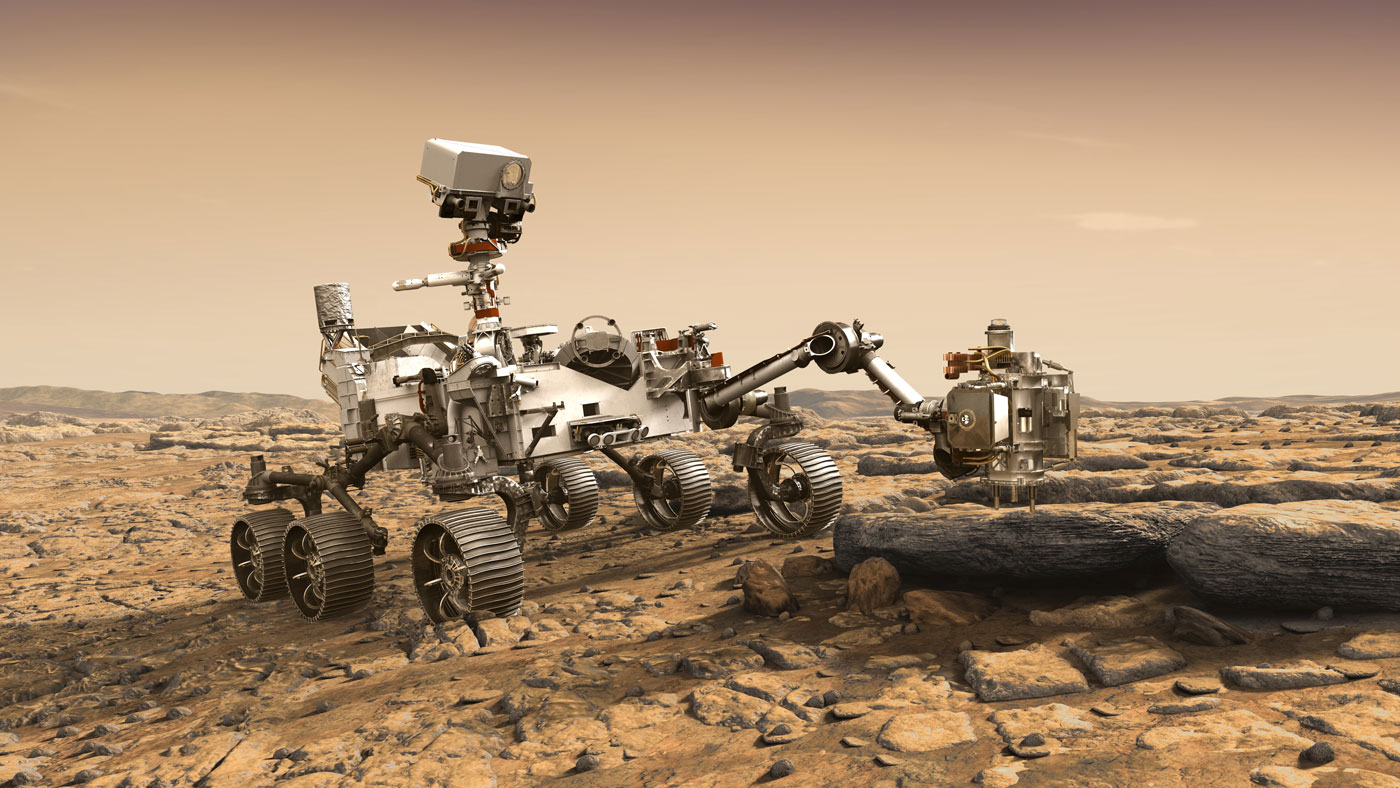
The landing of the Perseverance rover on Mars is one of the most exciting events to happen for space enthusiasts in quite a while. The Perseverance rover will be searching for ancient life, collecting terrain samples and collecting important data about Mars' geology and climate.
The rover will be landing in a place with high potential for finding signs of past microbial life – the Jezero Crater, a 28-mile-wide crater that was a possible oasis in its distant past. According to NASA, between 3-4 billion years ago a river there flowed into a body of water the size of Lake Tahoe. This deposited sediments packed with carbonite minerals and clay. The Perseverance science team believes this ancient river delta could have collected and preserved organic molecules and other signs of microbial life.
• Read more: Best camera for astrophotography
While the rover's mission is certainly fascinating, the technology that Perseverance is carrying is exciting in its own right as well. In total, the Perseverance rover is carrying 23 cameras. Nine of these are engineering cameras, seven are science cameras and seven are entry, descent and landing cameras.
We've broken down what each of these cameras are designed to do below, but make sure to check out the full NASA blog for more detail.
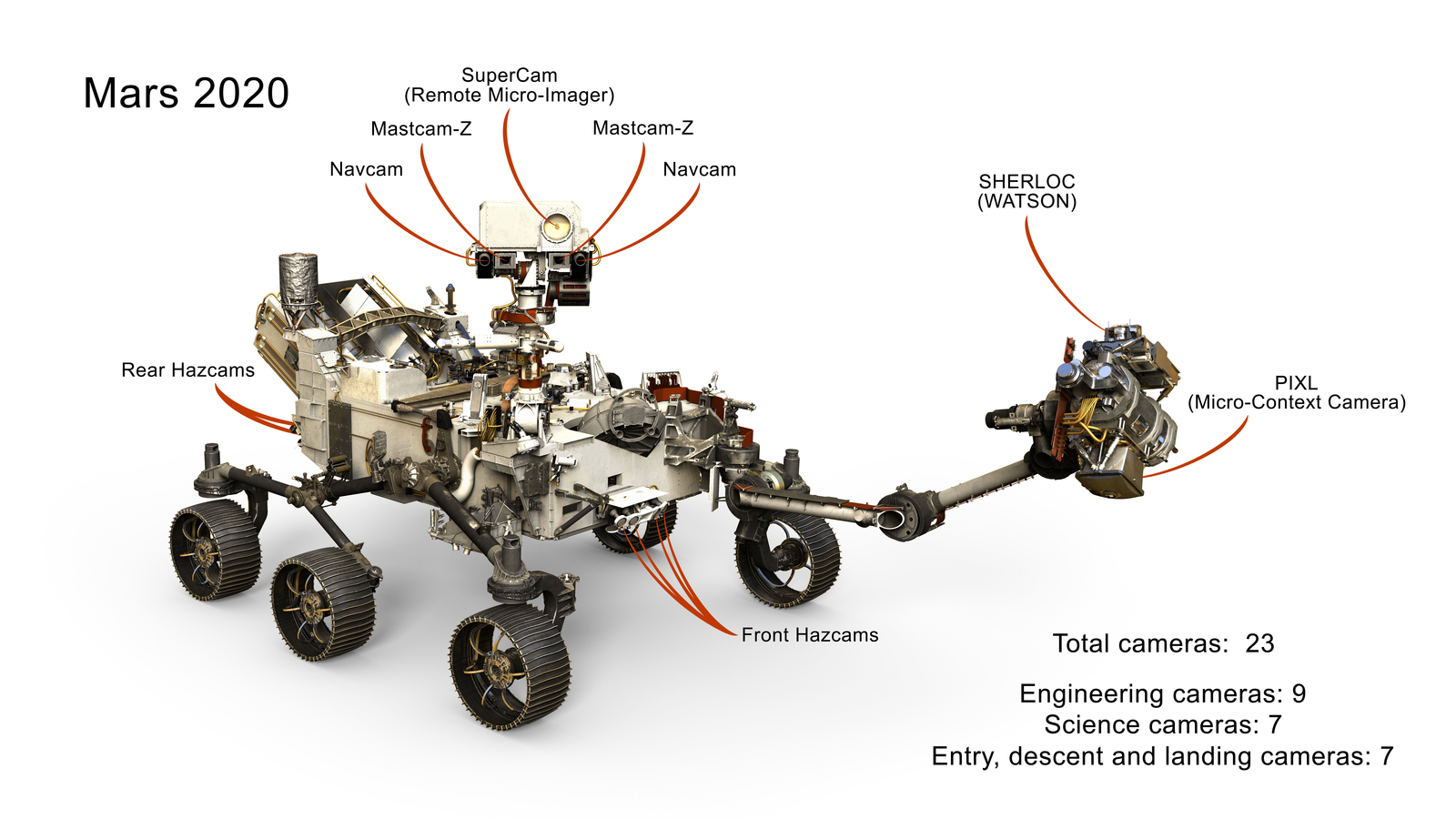
Mars rover: Descent imaging cameras
The Mars Curiosity rover was equipped with a Mars Descent Imager camera that recorded full-color video of Curiosity's journey through the atmosphere and down to the surface, giving the NASA science team a glimpse of the landing. However, for the Mars Perseverance rover, the engineering team has added several cameras and a microphone to document the entry, descent and landing in even greater detail.
This tech means that Perseverance was able to capture full-color video throughout the vehicle's final descent to the surface (this hasn't been released yet, as it's presumably still be processed).
Get the Digital Camera World Newsletter
The best camera deals, reviews, product advice, and unmissable photography news, direct to your inbox!
According to the NASA blog, these cameras include:
• Parachute "up look" cameras: Mounted on the backshell, looking upward at parachute deployment and inflation.
• Descent-stage "down look"camera: Mounted on the descent, looking downward at the rover as it is lowered during the skycrane maneuver.
• Rover "up look" camera: Mounted on the deck of the rover, looking upward at the descent stage during the skycrane maneuver and descent stage separation.
• Rover "down look" camera: Mounted beneath the rover, looking downward at the surface during landing.
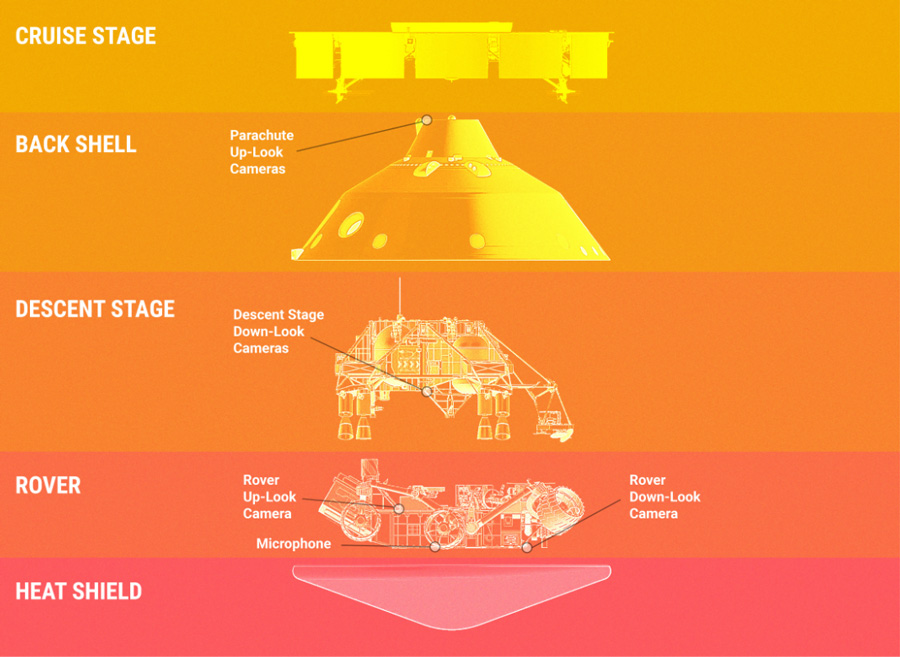
Mars rover: Engineering cameras
"Enhanced" engineering cameras for driving
The Mars Perseverance rover has "enhanced" engineering cameras to help the human operators on Earth drive the rover more precisely. These cameras are also designed to better target the movements of the arm, drill and other tools that get close to their targets.
"A much wider field-of-view gives the cameras a much better view of the rover itself. This is important for checking on the health of various rover parts and measuring changes in the amount of dust and sand that may accumulate on rover surfaces. The new cameras can also take pictures while the rover is moving."
Interestingly, NASA has given some technical specifications for these engineering cameras:
Weight: Less than 425 grams (less than a pound)
Image size: 5,120 x 3,840 pixels
Image resolution: 20 megapixels
Hazard avoidance cameras (HazCams)
Perseverance carries six newly developed Hazard Detection Cameras to help the rover avoid hazards to the front and back pathways. These could include large rocks, trenches or sand dunes. Engineers will also be using the front HazCams when using the robotic arms to take measurements, photos and collect rocks and soil samples.
Navigation cameras (NavCams)
Designed to aid in autonomous navigation for Perseverance, the two color stereo navigation cameras help the rover make its own navigation decisions without consulting controllers on Earth. These two cameras can see an object as small as a golf ball from 82 feet (25 meters) away.
CacheCam
The CacheCam is a single cameras that's positioned on the rover's underbelly at the top of the sample cache. It's designed to see down the top of the sample tube and take microscopic pictures of the top of the sample material before the tube is sealed. This will help scientists keep a record of the entire process as each sample is collected.
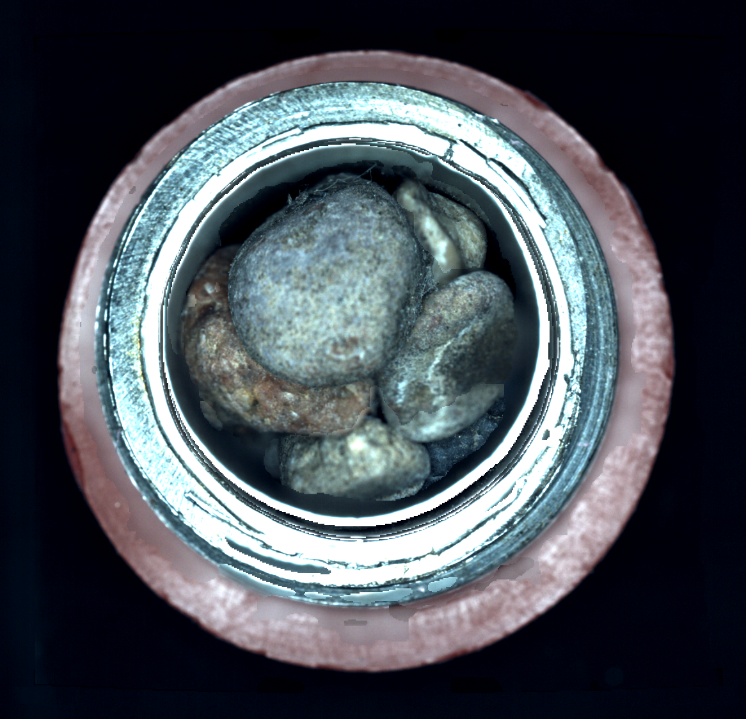
Mars rover: Science cameras
There are five types of science cameras on the Mars Perseverance rover – each designed to perform a different function. We've given a brief overview of their functions below, but make sure to check out the NASA blog for more detail.
Mastcam-Z
Mastcam-Z is a pair of cameras that takes color images and video, three-dimensional stereo images and features a powerful zoom lens.
SuperCam
The SuperCam camera is able to fire a laser at mineral targets that are beyond the reach of the rover's robotic arm. It will then analyze the vaporized rock to reveal its elemental composition.
PIXL
The PIXL camera uses X-ray fluorescence to identify chemical elements in target spots as small as a grain of salt.
SHERLOC Context Imager
The main tools featured with the SHERLOC Context Imager are spectrometers and a laser. However, it also has an integrated "context" macro camera to take extreme close-ups of the areas that are studied.
WATSON
The Watson camera is located at the "hand" or turret at the end of Perseverance's robotic arm. Its designed to capture the images that bridge the scale from the detailed images and maps that SHERLOC collects of Martian minerals and organics to the broader scales that SuperCam and Mastcam-Z observe from the mast.
Read more
Best mirrorless camera
Best camera for astrophotography
Best lenses for astrophotography
Best CCD cameras for astrophotography
Best light pollution filters
With over a decade of photographic experience, Louise arms Digital Camera World with a wealth of knowledge on photographic technique and know-how – something at which she is so adept that she's delivered workshops for the likes of ITV and Sue Ryder. Louise also brings years of experience as both a web and print journalist, having served as features editor for Practical Photography magazine and contributing photography tutorials and camera analysis to titles including Digital Camera Magazine and Digital Photographer. Louise currently shoots with the Fujifilm X-T200 and the Nikon D800, capturing self-portraits and still life images, and is DCW's ecommerce editor, meaning that she knows good camera, lens and laptop deals when she sees them.
